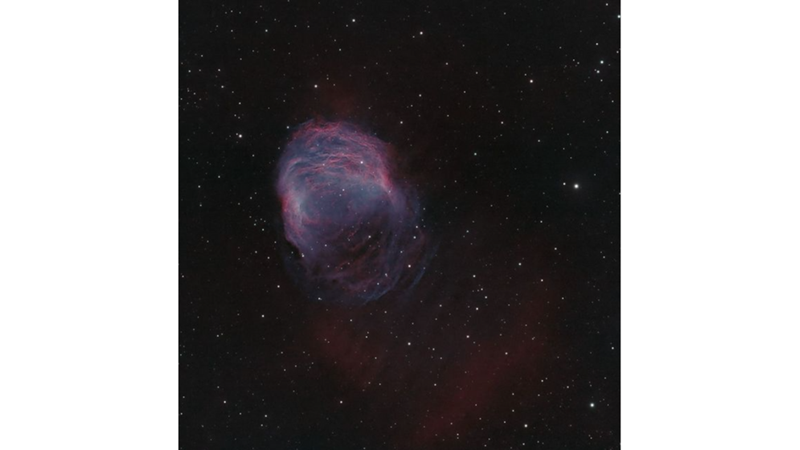This nebula, with its braided, snake-like filaments of glowing gas, has been named the Medusa Nebula. Also known as Abell 21, this old planetary nebula is located in the constellation Gemini and is about 1500 light-years from Earth. Like the mythological Medusa, this nebula is associated with a dramatic transformation and represents the last phase of the life cycle of low-mass stars like the Sun.
During the planetary nebula phase, stars shed their outer layers as they transform from red giants to hot white dwarfs. Meanwhile, the ultraviolet (UV) radiation emitted by the hot star causes the surrounding gas to glow. The central star in the Medusa Nebula is positioned as a faint source of light in the center of the bright crescent-shaped structure. Deep telescopic observations also reveal details of fainter filaments extending below and to the right of the bright crescent. The nebula is estimated to be about 4 light-years across.
March 17, 2023 Astronomy Photo of the Day (NASA APOD)
Image Source & Copyright: Martin Bradley Chesterfield Astronomical Society


 Nielawore
Nielawore









Yorumlar
look like a face
Yorum yazmak için lütfen giriş yapınız